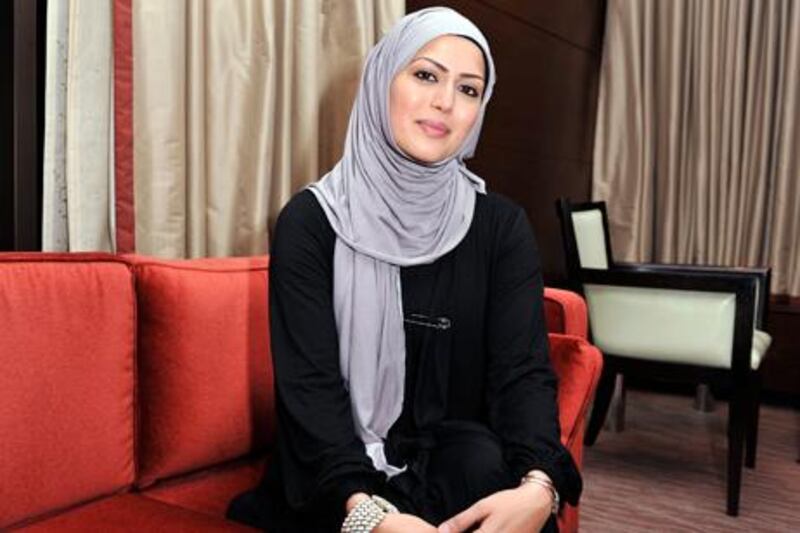The 2012 Spring/Summer collection of the Dubai-based fashion designer Rabia Z is a fitting tribute to the UAE's 40th anniversary.
Called "Traditions. Today. Tomorrow. Chapter 1: Arabia - The Mukhawara Collection", the creations pay homage to the long, traditional dress frequently worn by Emirati and GCC women.
"I wanted to do something to revive it [the mukhawara] and I was inspired by the embroidery that was often very intricate and used to be done by hand," says Rabia Zargarpur. "Although, I didn't use any embroidery in my collection, I used instead the patterns as prints in the same place around the neck, the arms, the wrists."
Using the traditional embroidered motifs of flowers and geometric shapes, Zargarpur deployed screen-printing techniques to trim her mukhawara-inspired kaftan jumpsuits, draped tops and pants - complete with matching shaylas.
"I remember wearing mukhawaras as a child," she says. "It's generally something worn at home for Eid and I think children love them because the embroidery is so elaborate and they don't often get to wear such colour with glitter and sparkles.
"Back then there was a lot of gold thread used and the crystals were overdone - over time they have become much prettier."
Reminiscent of traditional Emirati couture and fashioned into a modern ready-to-wear range, Zargarpur used a bold palette of indigo blue, parrot green, citrine and deep ruby fuchsia for her latest collection. Much like her childhood mukhawara, she's designed some of the line in silk, while also incorporating cotton, stretch linen and hints of denim.
Having made her prêt-a-porter debut on the UAE fashion scene in 2007, the Emirati-Afghani designer fast made a name for herself creating "modern and modest" clothing for women. Having lived and studied in the US, showcasing her latest range in New York's West Village last November 16 took the story full circle.
"People, especially in New York, where they didn't know what a mukhawara was, really loved it!" she says. "When they talk about Emirati women, it's always 'Wow, they are such fashionistas' because they are well known for their sense of style and their amazing accessories - the beautiful bags, the jewellery, the shoes.
"Having lived away for more than half my life and then coming back [to the UAE], I, of course saw a huge change in the fashion. Emirati ladies are more boldly expressing their style than ever before - they are much more on-trend," she says. "Girls are fashion conscious from a much younger age, too - so different from the past, where for me it was 'Wow, a mukhawara!' and it was much more of a tailor culture."
With hopes of her new collection finding favour with young fashion-conscious Emiratis and expatriates, Zargarpur also has a sentimental reason for wanting the line to do well.
"My grandmother always wore them, until she passed away," recalls the designer. "She would always wear 'mukhawaras for the house', with very light embroidery and without bright, bold colours and crystals. I know there are still older women who wear that today."
Zargarpur says her younger 23-year-old sister likes wearing mukhawaras. "When it comes to Eid, she will still go out and make a couple of mukhawaras for herself. In non-traditional hot pink with polka dots, for example, but still with the embroidery and crystals."
Rabia Z, as she's known in the industry, has full confidence of the mukhawara's place in the UAE's fashionable future, similar to its important contribution to the style archives of the past.
Its resurgence into mainstream and haute fashion was confirmed upon a recent trip to see some exclusive clients in the capital.
"I started seeing them [mukhawaras] again when I went to visit the Royal Family at the palace in Abu Dhabi." she says. "I saw very beautiful, simpler versions being worn at home and it really inspired me how the tradition was being kept."





